In designing and producing a product, which arises from an idea, prototyping means that the product after every new test, is adjusted from a functional as well as a design point of view. The process of prototyping is very simple: create – test – improve – repeat.
In the days just gone by, we have been collaborating with Improve, a group, with regard to a prototype of a product which, for the moment, is a business secret, but will soon appear on the market. The process of development of the product normally takes place in the same manner.
The process of prototyping
On the basis of the client’s idea about the production of a certain product, we bring in an industrial designer as well as a constructor, who both have knowledge of 3D technologies. They bring to the table a wide range of production options. Otherwise it is important in the formation phase of the product that the producer of the prototype is brought into the conversation, as they can advice both the industrial designer as well as the constructor with regard to the construction, so that in the phase of physically producing the prototype or product, as few as possible adjustments are necessary.
It is far easier to address mistakes virtually, in the CAD/CAM program, rather than in the phase of physical prototyping or production of the product. The producer of the prototypes or the prototyping centre has knowledge, experience and very well knows 3D technologies, so that on the basis of the fundamental data in relation to the desired prototype or product, the most suitable technology is chosen, which, given the intent of the product, is suitable for the quantity, material, surface finish, deadline and price.
Collaboration with Improve
The guys from Improve found us on the internet and already at the first meeting showed us a produced example, which was without a suitable data file for the purposes of 3D printing it. Only on the basis of a 3D drawing are we able to attend to modifications and improvements regarding functionality and the design of the product as well as those kinds of things which lower the price of its eventual production.
In the above mentioned case, the guys from Improve needed the first representational piece in 5 days. For just the printing that was enough time, but the 3D design would take a little bit longer. Usually things don’t flow so quickly in the 3D drawing stage if the client does not have precisely defined measurements or such a well-defined idea about the design of the product.
In the end we succeeded, as we also adapt to our clients situation, even if that means working all night. Our co-worker, Rok Žvagen, a specialist for plastic parts, already by telephone provided excellent advice and gave the client a feeling of reliability and seriousness. Elsewhere, no one else was willing to provide them with any kind of guarantee that the prototype would be complete in such a short period of time, that being less than 10 days.
Our experience with prototyping
With prototyping, adapting to the client with the most suitable choice of technology is key: clients typically already have agreed-to terms for presenting or testing the prototype, so in this kind of case it is important that we know of the possibilities that exist regarding the production of the prototype and what kind of deadlines we are facing.
The guys from Improve told us that from the first drawing and first prototype to a small series of functional pieces for presentation purposes they needed a little more than a year, which is nothing short of phenomenal. Our experience in past years is that typically the whole process lasts approximately two years. Although most clients in the beginning are of the opinion that it is possible to create a prototype in the shortest time, that is in a few months, they are very surprised when we present our past experiences with regard to this.
Our opinion is that for a good product, it is better in the beginning to invest more money and make adjustments along the way on test pieces, rather than produce a large series, where the costs and time rise exponentially. The picture below otherwise shows efficiency in terms of quantity, however a very similar graph arises when we consider costs for fixing tooling for mass production and a longer time frame for making adjustments. It is easier to fix CAD data and make a print (faster, cheaper) than to make changes to mass production tooling (higher price and longer time).

